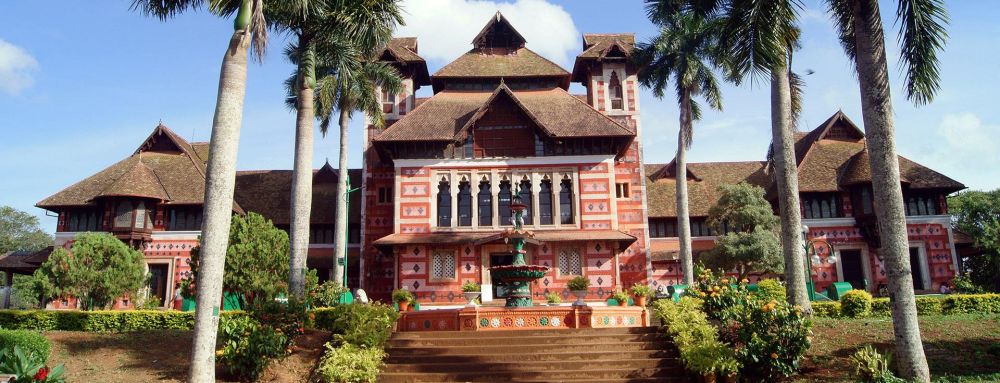

The Napier Museum, located in Thiruvananthapuram (formerly known as Trivandrum), is one of the most prominent tourist attractions in Kerala, India. The museum was named after the former Madras Governor General, Lord Napier, and is a testament to the city's rich cultural heritage and history. The museum was established in the 19th century and has since been a significant draw for tourists and historians alike.
Designed by the British architect Robert Chisholm, the museum incorporates a unique blend of Indo-Saracenic architecture, which combines Indian, Islamic, and Gothic architectural elements. The construction was completed in 1880, giving visitors today a glimpse into the architectural aesthetics of that period. The Napier Museum houses a rare collection of archaeological and historic artifacts, ancient ornaments, a temple chariot, and ivory carvings.
In the early days, the museum attracted mostly scholars and connoisseurs of art and history. However, with the rise of cultural tourism in India, the Napier Museum gained prominence as a must-visit destination for those venturing into Kerala. The state’s tourism department recognized the museum's potential and actively promoted it within its 'God’s Own Country' campaign, further boosting visitor numbers.
Over the years, tourism at the Napier Museum has benefited from improved accessibility and the development of related tourism infrastructure in Trivandrum. The museum has become a focal point for visitors seeking to understand Kerala's diverse culture and history.
Recently, there has been a growing trend of experiential and educational tourism, where visitors are keen not just to see artifacts but to understand their historical context and significance. This has led to the introduction of guided tours and interactive sessions at the Napier Museum.
Interactive Display Technology has also been integrated, allowing visitors to have a more engaging experience with the exhibits. Additionally, the museum has seen an increase in footfall during special exhibitions and cultural events, which often happen in the museum's premises.
Sustainable tourism practices are gaining momentum, and the museum administration is taking steps to implement ecological-friendly practices to preserve both the historic structure and the natural environment around it.
The museum's close proximity to the Zoological Gardens and its location within the heart of the city make it a convenient and attractive destination for tourists. As an icon of Trivandrum’s historical and cultural identity, the Napier Museum continues to flourish as a beacon of learning and a delightful experience for tourists from all over the world.
In summary, the Napier Museum stands as a proud symbol of the historical and cultural fabric of Trivandrum and continues to play a pivotal role in the tourism landscape of Kerala.